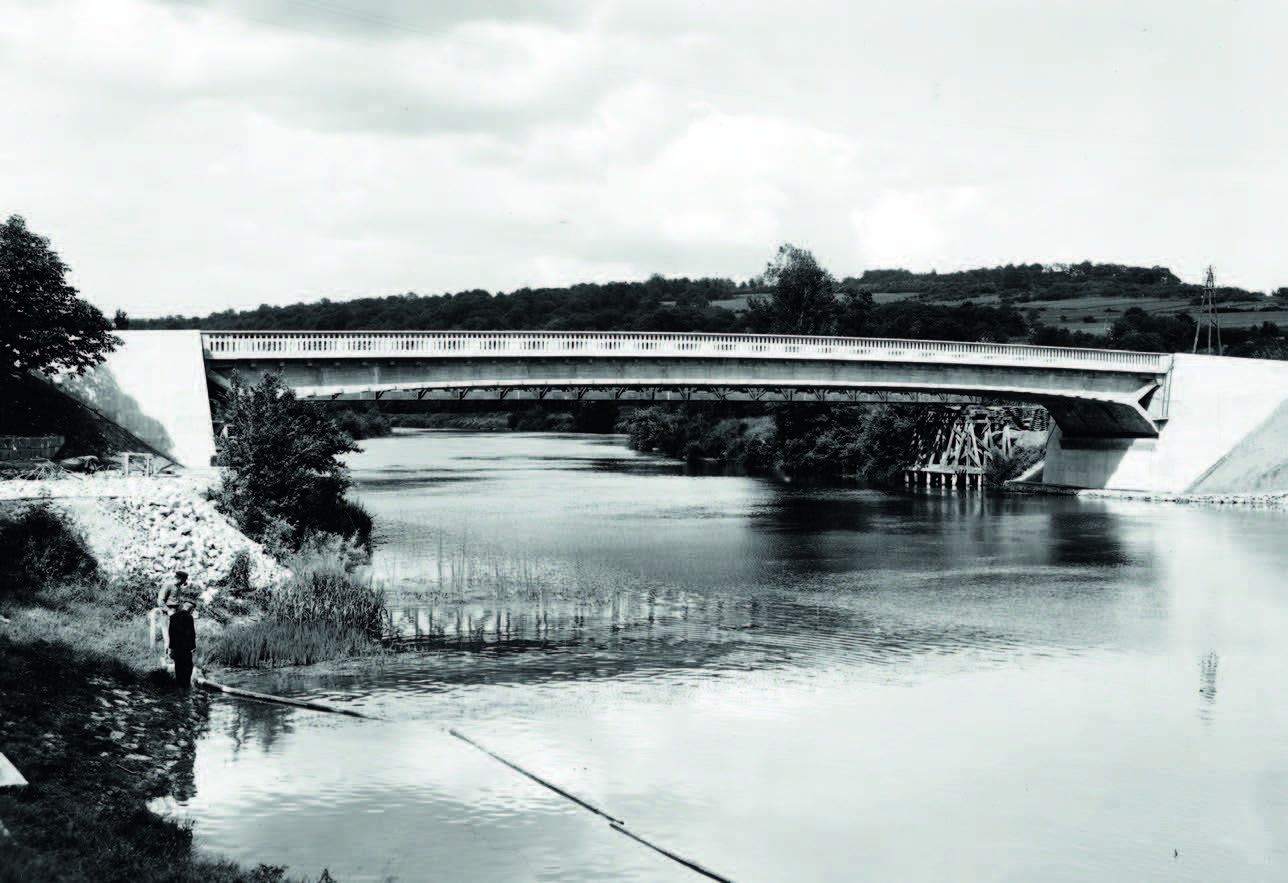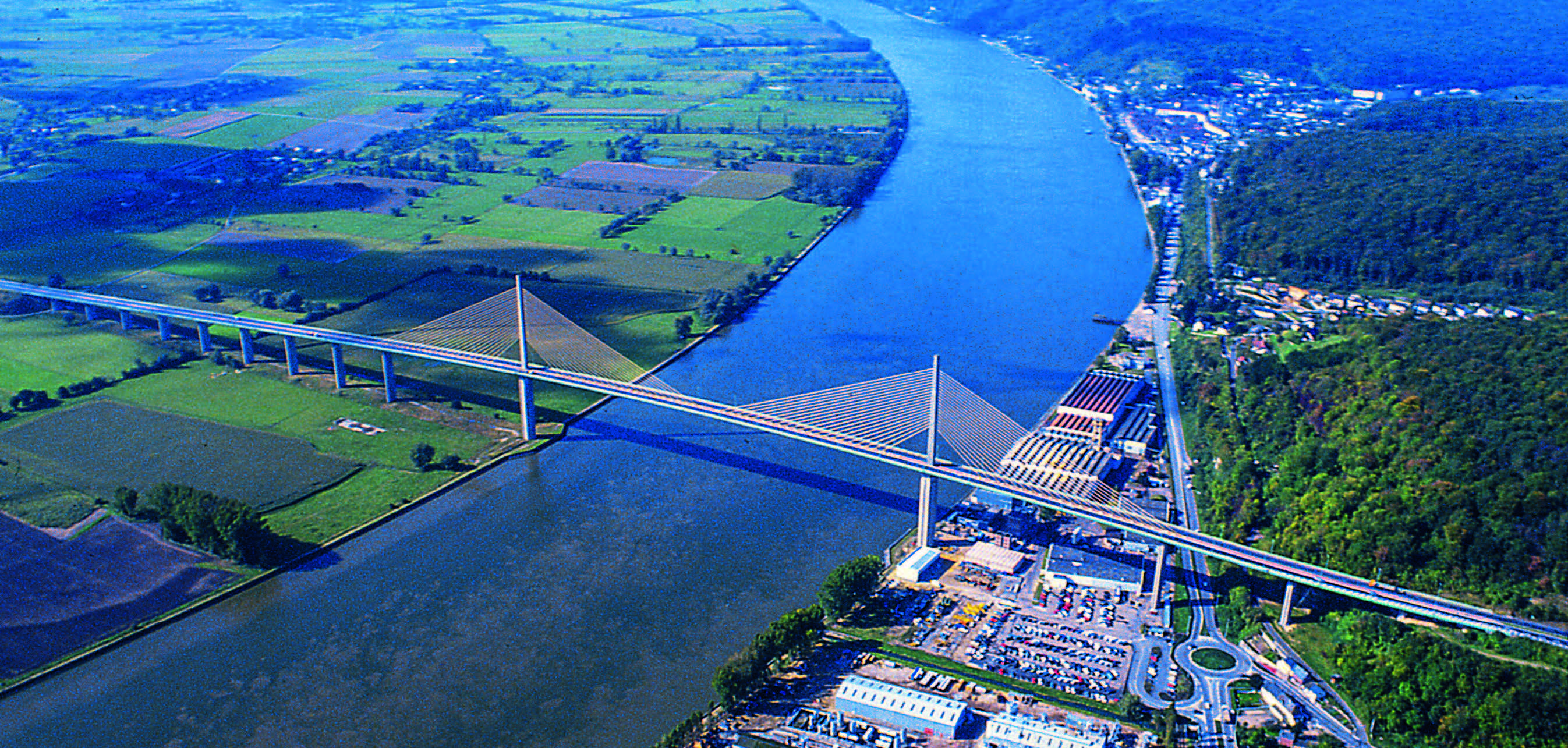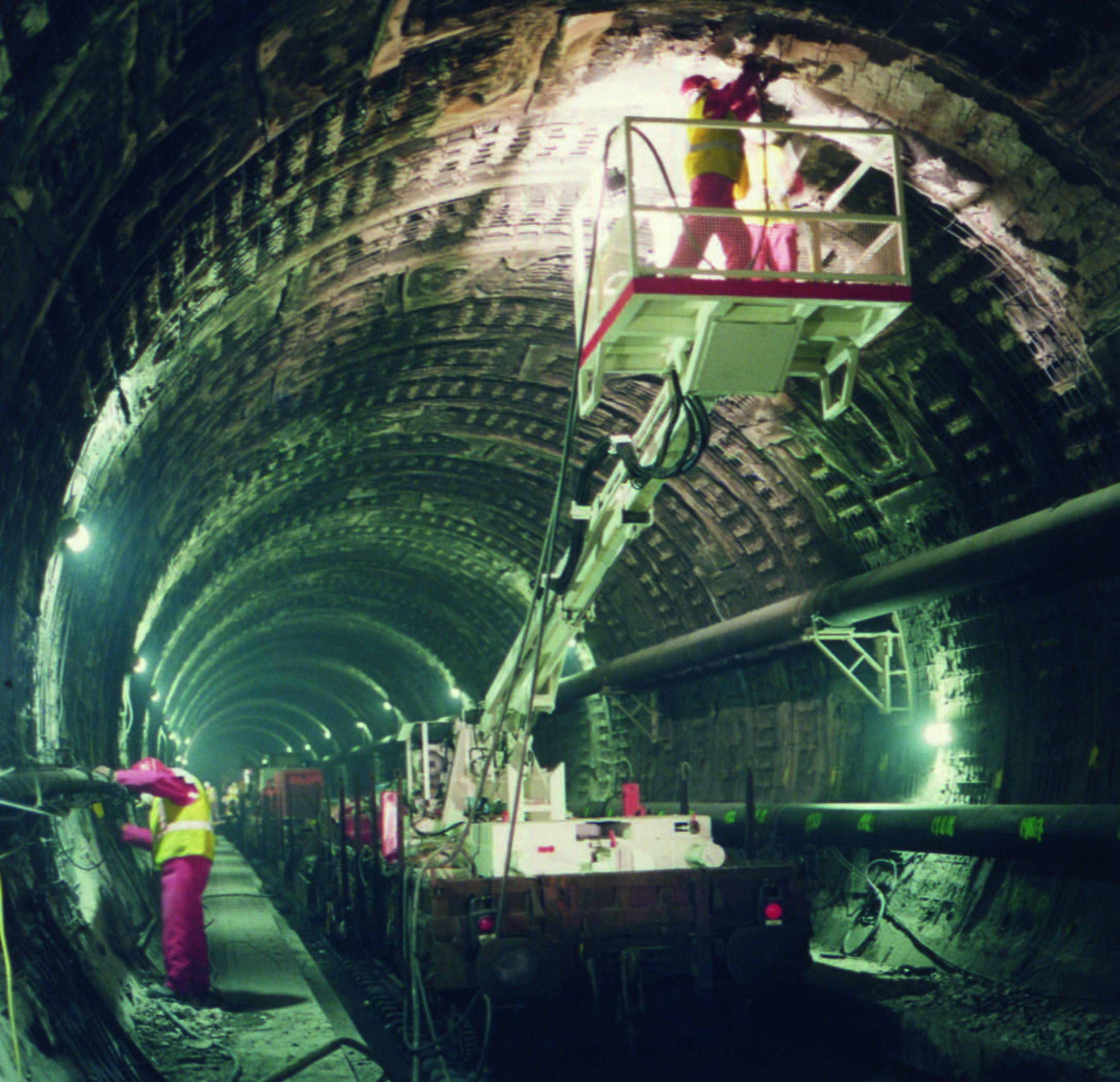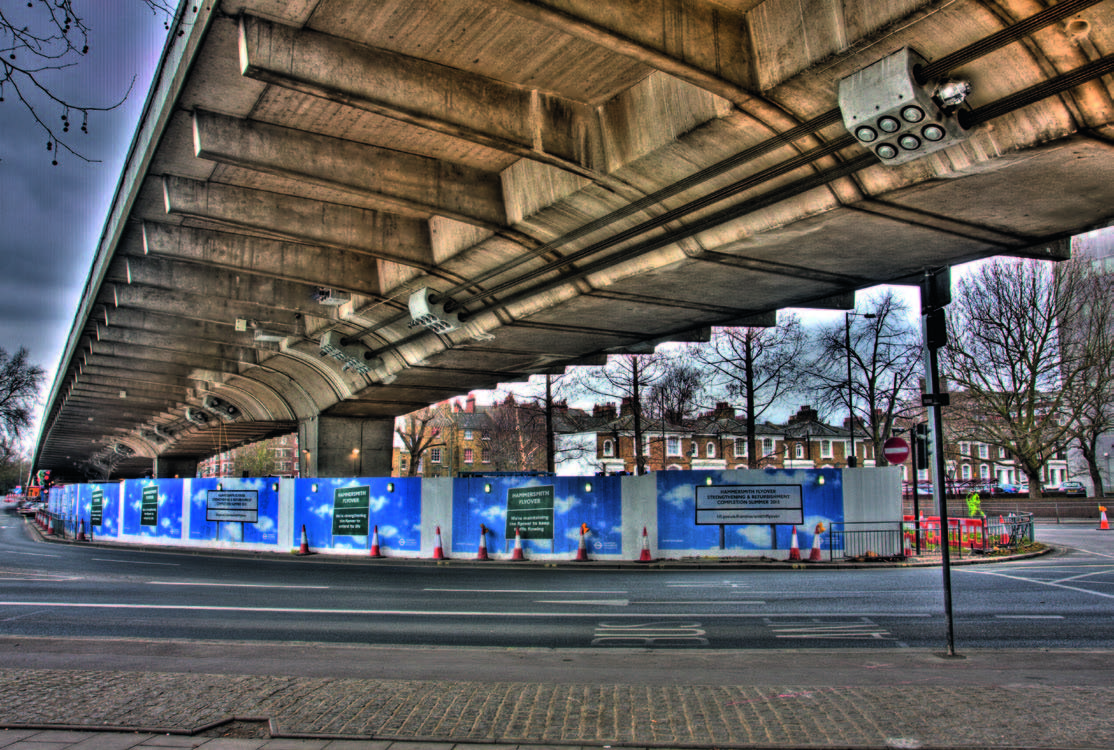As Freyssinet celebrates is 75th anniversary this year, we reflect on some notable projects and the impact of its innovations around the world.

Eugene Freyssinet
1940s
The Freyssinet Group originated in 1943, when renowned French construction engineer Edme Campenon joined forces with Eugène Freyssinet to utilise his patented processes – most notably Freyssinet’s concept of prestressing and his development of new technologies, such as flat jacks, prestressing tendons, concrete cone anchoring and tensioning jacks.
Known then as Societe Technique pour l’Utilisation de la Precontrainte or ‘STUP’, the company established the foundations of innovative technology and engineering which remains at the heart of all Freyssinet solutions today.

Luzancy Bridge, France
One of the first projects undertaken by STUP was the Luzancy Bridge. Designed by Eugène Freyssinet, the 55-metre span structure was the first prestressed bridge to be built in France. It was constructed over the Marne River during the Second World War to replace a bridge that had been destroyed. Work on site was suspended until the war ended, and the build was completed in 1946.
Work on the Esbly bridge in France followed, a 74-metre span built using the same design principles used for Luzancy Bridge. In Brazil, STUP built the Galion Bridge, one of the first bridge structures using prestressed beams.
As the 1940s drew to a close, the company started to branch out internationally, sending its engineers all over the world to promote the products and applications that were striking a chord in France.

Basilica of Saint Pius X
1950s
In 1955, STUP designed three viaducts with a maximum span of 150 metres for the Caracas-La Guaira motorway in Venezuela. Significantly, the project also saw the innovative development of elastomeric and Neoprene bridge bearings. The company continued to demonstrate diversity in other areas, designing and constructing a striking 200-metre-long prestressed concrete nave for the underground Basilica of Saint Pius X in Lourdes in 1956.
1960s
Sadly, both Eugène Freyssinet and Edme Campenon passed away in quick succession in 1962. Freyssinet in particular continued his technical inventiveness right up until his death at the age of 82. His legacy is preserved in the company to this day.
During the 1960s, the company continued to expand on it existing expertise and innovative spirit, taking on more ambitious projects around the world.
The decade saw the introduction of prestressed segments with combined joints and prestressing and reinforcement anchors. In 1966, the prestressed concrete deck of the Chillon viaduct in Switzerland was constructed using the precast segmental method – in what was an innovative method at the time, segments were picked up using a launching gantry and then lowered into place.
Oléron Bridge (above) in France was built by STUP using the precast arch segmental construction method. When the bridge was opened in 1966, it was the longest bridge in the country at that time. In Egypt, the Abu Simbel temple was raised to protect it from the rising waters of the newly constructed Aswan Dam using Freyssinet flat jacks to support the new pillars.
1970s
In 1976, STUP became Freyssinet International.
Notable projects of the decade included the Ekofisk offshore oil platform, located in the North Sea; the first oil platform designed by Freyssinet and the first built using prestressed concrete, the construction of the Olympic Stadium Velodrome (below right) in Montreal in 1976 using a method of decentring by placing flat jacks at the four abutments, and the 320m span Brotonne Bridge in France, built in 1977 using the first Freyssinet stay cables.

Brotonne Bridge, France
1980s
Ambitious international projects continued in the eighties, with the build of the prestressed superstructure Tancredo Neves Bridge, also known at the Fraternity Bridge (below) in Mexico. In Paris, the 300,000 tonne Grande Arche De La Defense was constructed on four Freyssinet bearings and prestressing works took place on three 80,000-m3 and four 50,000-m3 LPG tanks in Abu Dhabi.

Channel Tunnel repairs
1990s
Technical development accelerated in the 1990s, with significant advances in the reinforcement and repair of structures. New innovations included the use of carbon fibre strengthening and validation tests for Transpec SHA dampers.
Some of the company’s most iconic projects took place during this time, such as the construction of Cardiff Millennium Stadium, with the roof supported by four 80-metre masts and 18 stay cables. Freyssinet also carried out considerable repairs to the Channel Tunnel following a fire in 1996.
2000s
The new millennium saw Freyssinet secure its position as a world leader in the construction of cable stayed bridges with projects such as My Thuan Bridge in Vietnam, the Charilaos Trikoupis Bridge in Greece and the Millau Viaduct in France.
The company also expanded its products scope, creating the Freyssibar® range of prestressing bars.
In 2009, the Soletanche Freyssinet group was formed, joining Soletanche Bachy, Freyssinet, Terre Armee, Menard and Nuvia.

Hammersmith Flyover, London
2010s
Today, Freyssinet has over 8,500 employees and operates in 60 countries around the world. The company continues the spirit of innovation and specialist engineering established by its founder Eugène Freyssinet in the 1940s.
The last eight years in the UK alone has seen the company take on its most advanced, ambitious and innovative projects yet. Significant (and award-winning) projects have included the renovation and replacement of the post-tensioning system of Hammersmith Flyover in London, the complex refurbishment of Glasgow Subway tunnels and strengthening and repair works carried out on Gatwick Airport’s multi-storey car park.
The development of products and application solutions has included:
- Free sliding bearings with anti-lift systems
- ElevArch®: a solution for the controlled jacking of masonry arched bridges
- ExoLeaf®: for the repair and strengthening of structures using Ultra High-Performance Fibre Reinforced Concrete
Freyssinet remains a specialist of structural strengthening, concrete repair, expansion joints, prestressing and jacking, renowned for pushing the envelope of engineering technology.
